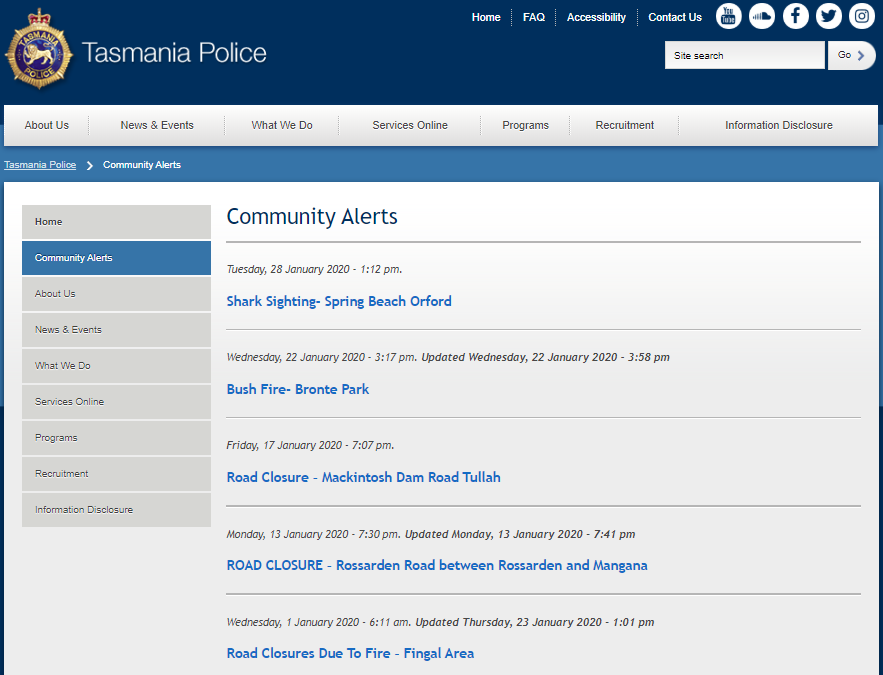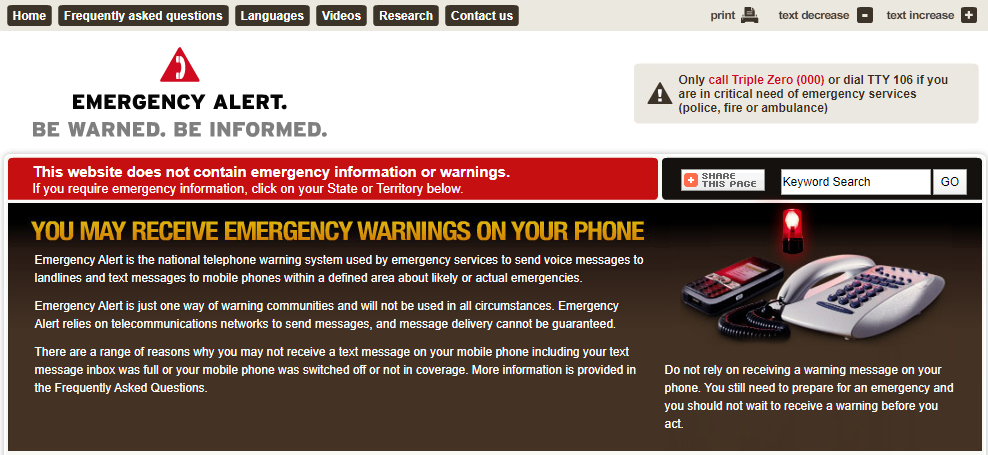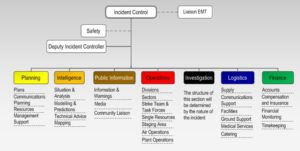A multi-channel approach to issuing public information and warnings is widely acknowledged as good practice. No single warning mechanism is guaranteed to reach everyone who may be impacted by an emergency event.
Whole-of-Government Public Information Arrangements
The Public Information Unit
The whole-of-government Public Information Unit (PIU) brings together communications staff from multiple government agencies to manage whole-of-government public information during emergencies.
The PIU is managed by the Department of Premier and Cabinet (DPAC) and can be activated for a range of hazards including bushfire, pandemic and biosecurity incidents.
Activation of the PIU can be requested when:
- There are not sufficient resources within the RMA to manage all public information requirements of the operational response to an emergency
- A whole-of-government public information response is required because of the scale, impact or longevity of the emergency
- There are several agencies involved in management of the emergency and there is need for the coordination of public information activities.
Publishing tools in Tasmania
A multi-channel approach to issuing public information and warnings is widely acknowledged as good practice. No single warning mechanism is guaranteed to reach everyone who may be impacted by an emergency event.
The following are the main publishing tools used for warnings and public information in Tasmania:
- TasALERT website and social media
- Tasmania Fire Service website and social media
- BoM website, social media and app
- Tasmanian State Emergency Services -SES website and social media
- Tasmania Police community alerts website and social media
- Emergency Alert
Here are a few visual examples below:


Incident Management
In Tasmania, fire and emergency services and other agencies/organisations with emergency management support responsibilities have adopted an incident management system based on the Australasian Inter-service Incident Management System (AIIMS ). Tasmania Police have adopted a very similar system of incident management in line with other police services around Australia: Incident Command Control System Plus (ICC+)
Incident management is defined as those processes, decisions and actions taken to resolve an emergency incident, and support recovery that will enable the community to return to a ‘new normal’. It is important to understand incident management principles if you hold a position in Tasmania with emergency management responsibilities as this is the process that underpins how an emergency event is managed.
What is AIIMS ?
The Australasian Inter-service Incident Management System (AIIMS) has been the foundation of Command and Control doctrine for fire and emergency services in Australia and New Zealand for over 20 years. It is based on five key principles and provides a consistent approach to managing incidents. The chart below depicts a Full Incident Management Structure Integrated Level 3 AIIMS V 4.

“AIIMS is a system for the management of all incidents, imminent or actual, occurring in the natural or built environment; or for the many other activities that emergency management agencies, and those that support them, may have to deal with” (AFAC, 2017).
Some agencies within Tasmania have adopted the AIIMS systems as it’s Incident Management Framework.

The video below, Introduction to Incident Management, provides an overview of Incident Management from a Tasmanian perspective from subject matter experts. This video is supported by another module, Introduction to Incident Management which you can complete to further your knowlegde in incident management.
That brings us to the completion of this module
In summary
The community seeks information in an emergency which needs to be delivered in a relevant, timely and tailored message provided through multiple mediums. It should be remembered:
- The community looks for trusted and reliable information
- The community wants information that they can access easily through multiple mediums.
- The community can access phone numbers, links to Nasaler, BoM and other emergency services through the Tasmanian SES webpage
- The community can access information through social media, apps other platforms.

The following resources can be accessed to extend your capability and capacity as an individual who has a role in emergency management:
- Tasmania Emergency Management Arrangement
- Public Information and warnings Handbook
- State Special Emergency Management Plans and Associate Plans-WebEOC-Municipal Councils websites
- Tasmanian Disaster Resilience Strategy 2020-2025
- SEMC Strategic Directions Framework 2020-2025
- Tasmanian Emergency Evacuation Framework
- Managing Exercises: A handbook for Tasmanian Government Agencies
- People at Risk in an Emergency
- Municipal Emergency Management Guidelines-(MEMG)
- Australian Institute for Disaster Resilience (AIDR) Knowledge Hub
- Australasian Fire and Emergency services Authority

